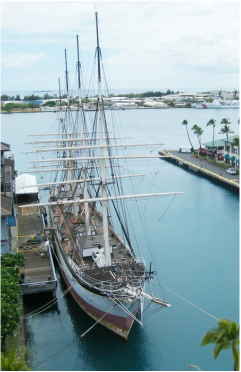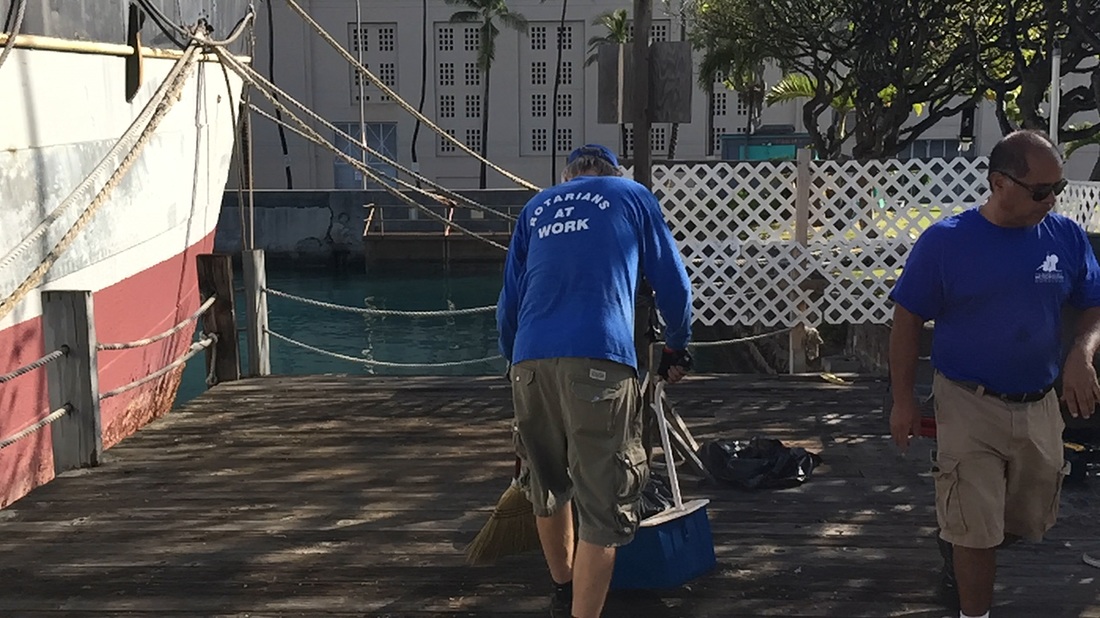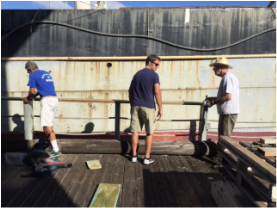
This picture shows what the National Historic Landmark ship Falls of Clyde will look like when she is fully restored. The restoration needs to begin with a much-needed drydock to clean, repair, and paint her hull. Support from the State through a Grant-In-Aid will show other funders in the community that Falls of Clyde is a meaningful part of and symbol of our community’s rich maritime history.
Here are some important points to consider in support of the restoration:
- Falls of Clyde is “a symbol of Hawai`i’s maritime heritage” and a “treasure to be cherished and protected by the State and residents of Hawai`i.” (S.C.R. 138, 2009)
- Falls of Clyde preservation and restoration is consistent with the present “Hawai`i State Historic Preservation Plan.” Here are the guidelines used that we believe clearly support our work:
- Historic preservation benefits everyone.
- Historic preservation requires action by everyone.
- The historic and cultural sites of Hawai`i encompass every aspect of the State, including people, events, and places.
- Falls of Clyde preservation and restoration is a link to the maritime roots of Hawai`i. The “Hawai`i State Historic Preservation Plan” recognizes that importance: “The history of a community contributes to its personality. Preserving the history of a place through its significant historic resources gives a community its unique character. Historic preservation provides a link to the roots of the community and its people.”
- Falls of Clyde as an historic site has been recognized by the Historic Hawai`i Foundation (HHF), our preeminent preservation organization. Kiersten Faulkner, HHF Executive Director has stated: “Historic places are what make a community unique and a better community. Historic places give meaning to a community.”
- Falls of Clyde holds an unique place in international maritime history as the last remaining iron hull, four-masted sailing oil tanker in the world. Dr. Ray Ashley, CEO of the San Diego Maritime Museum, gave a talk in Honolulu in January 2016 in which he made some relevant points about the importance of unique historic maritime artifacts like Falls of Clyde. Here are his key points:
- Ships are works of (naval) architecture.
- Ships are collectively repositories, as well as conveyances, of culture, representing the first worldwide, large scale technological system in history.
- As opposed to terrestrial sites, ships are signified by what they are floating in rather than the real estate they occupy.
- Reflecting the connective nature of the enterprise of the sea and its influence on world events, no one ship is a site unto itself, but collectively they constitute a multinational site.
- Recognition that the great historic vessels represent the patrimony of humanity and that the sea is a field of world heritage furthers UNESCO’s efforts in maritime archaeology to protect and conserve these cultural resources.
- To neglect recognizing the historic ships as a world heritage site is to ignore the role of seafaring in the development of civilization and to put these treasures at risk.
- The great historic ships represent the last remnant of an architectural construct which once spanned the world.
- Like any historic site, a ship may be of world significance but it is usually up to the surrounding community to find the means to sustain it.
- Like any historic site of world significance, there needs to be popular understanding of that significance in order to gain support and resources.
The second activity was a workday with the Rotary Club of Metropolitan Honolulu. Our mahalo goes out to the men and women of the club who dedicated their time on two projects. One group of volunteers helped to pick up rubbish along the waterfront as part of Friends of Falls of Clyde’s Adopt-A-Harbor participation. A total of 3125 pieces of trash were picked up.
The second group of volunteers worked at Pier 7 to replace some deteriorated sections of the pier railing and helped us move some heavy items. It was great to have their quality help. Here are some pictures of their workers.


 RSS Feed
RSS Feed